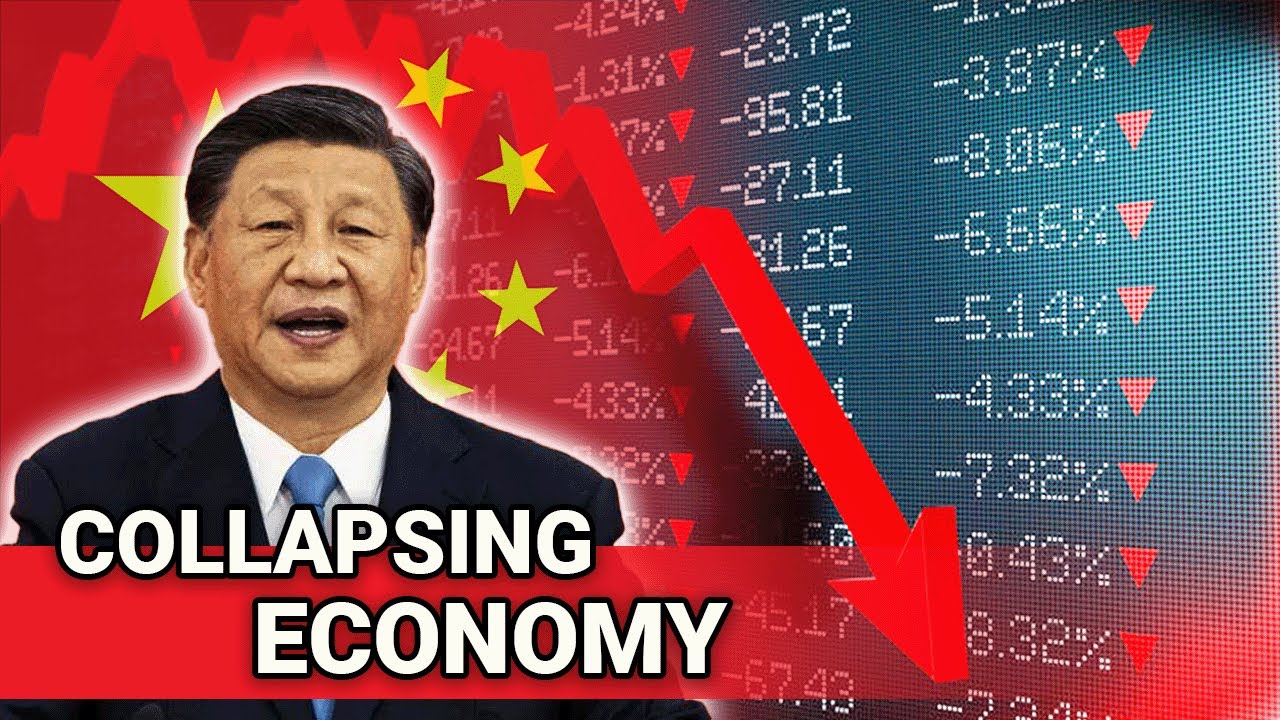The Decline of the U.S. Dollar: The Slow Death of a Global Reserve Currency
Ready to uncover the truth? Sick of the lies? Join our Telegram Channel now. It’s time for the real story! My gratitude to all my readers!
The U.S. dollar’s reign as the global reserve currency is nearing its end. Explore how aggressive sanctions, global shifts, and rising alternatives are accelerating the dollar’s decline, reshaping the global financial system.
Over the past century, monetary systems have rarely stood the test of time, with most changing every 30 to 40 years. Before 1914, the global monetary system was anchored to the classical gold standard, a mechanism that linked paper currencies directly to gold. This gave the world a sense of stability and predictability when it came to monetary value. However, this system began to unravel as global powers found the rigidity of gold-backed currencies unsustainable, especially during the strain of wars and economic crises. Fast forward to 1944, and the world was introduced to a new monetary system born out of the Bretton Woods Agreement.
Bretton Woods: The Birth of the Dollar Dominance
At Bretton Woods, the U.S. dollar was crowned as the global reserve currency. This wasn’t just any currency—it was pegged to gold at $35 per ounce, giving it real intrinsic value. The significance of this decision cannot be overstated. The dollar was now the backbone of international trade, and the U.S. became the de facto leader of the world’s financial system. It was a period of immense U.S. power—both economically and politically. But, like all empires, the dominance of the dollar had its expiration date in sight.
By 1971, President Nixon ended the dollar’s direct convertibility to gold. It was a shocking moment, often referred to as the “Nixon Shock.” For the first time in modern history, the global monetary system had no tangible backing. The world was operating on trust alone, trusting that the dollar retained value not because of gold but because of the power of the United States. Today, this system is over 50 years old, and the cracks in its foundation are becoming more evident.
The Dollar’s Challenges: The Rise of Global Competitors
The U.S. dollar has been under siege for years as nations around the globe work relentlessly to dethrone it as the world’s leading reserve currency. The quest to unseat the dollar is a slow and deliberate process. Nations understand that such monumental changes don’t happen overnight but are the product of decades of incremental shifts. What started as isolated attempts by nations to reduce their dependency on the dollar has now turned into a global movement. Countries like China and Russia have been at the forefront, pushing for alternatives to the dollar-dominated financial system.
Yet, no one could have predicted the pace at which these changes would accelerate after Russia’s invasion of Ukraine in February 2022. In response to this invasion, the U.S. unleashed an unprecedented sanctions regime against Russia. It was the most aggressive sanctions campaign ever seen, targeting everything from financial institutions to individuals. These sanctions have reshaped the global economic landscape in ways that are still unfolding.
The Aggressive U.S. Sanctions and Their Fallout
The first wave of sanctions was aimed at Russian banks and oligarchs, freezing their U.S. dollar accounts and limiting their ability to conduct business on the global stage. This was not unexpected. However, the second round of sanctions took the world by surprise, as the U.S. froze the dollar reserves of Russia’s Central Bank itself. This was something unprecedented. To put it in perspective, Russia is the ninth-largest economy in the world, with a GDP exceeding $2.1 trillion and is the third-largest oil producer globally. By freezing its central bank assets, the U.S. effectively shut Russia out of the global financial system, a move only previously reserved for rogue states like Iran, North Korea, and Syria.
The fallout was immediate and severe. Suddenly, one of the world’s largest economies found itself unable to access the global payment systems, unable to conduct routine international transactions, and cut off from critical imports of technology and goods. Companies from around the world, pressured by U.S. and EU sanctions, began to pull out of Russia en masse. Even major global players like McDonald’s and Shell Oil exited the market. The message was clear: do business with Russia at your own peril.
But the sanctions had an unintended consequence.
A Fragmented Global Economy: The Resilience of Non-Western Nations
While Western nations, particularly the U.S. and the EU, rallied behind the sanctions regime, large portions of the world refused to play along. It wasn’t that they supported Russia’s actions in Ukraine—many didn’t. Instead, these nations were unwilling to sacrifice their economies over a war on the other side of the globe. Countries like China and India saw an opportunity. Both became major buyers of Russian oil, filling the gap left by Europe’s withdrawal from Russian energy markets. As the biggest economies outside of the West, their actions sent a strong message: the global economy is no longer a Western-dominated playground.
China didn’t stop at buying oil; it began selling critical goods to Russia, including machinery, semiconductors, and automobiles. Iran, long under its own set of sanctions, expanded its arms sales to Russia, providing essential military equipment, including drones. Turkey, a NATO member, expanded its exports to Russia, walking a tightrope between its Western allies and its economic interests.
All of this trade with Russia was happening without the use of U.S. dollars. Slowly but surely, countries were finding ways to bypass the dollar in their international transactions. For many of these nations, the dollar had become a symbol of U.S. overreach and a potential liability. What if they became the next target of U.S. sanctions? The risks were too high, and they began searching for alternatives.
The Seeds of De-dollarization
This shift away from the dollar is something I’ve been warning about for years. Almost a decade ago, I sat in a secure room at the Pentagon with top officials from the U.S. military, CIA, and Treasury. I explained to them that overusing the dollar as a weapon in financial warfare would ultimately backfire. Nations, tired of being subject to U.S. sanctions, would seek alternatives. Some officials took note of my warnings, while others dismissed them outright. One Treasury official even slammed the table and declared that the dollar would remain the global reserve currency forever.
I couldn’t help but feel a sense of déjà vu. His statement reminded me of John Bull’s confidence in the British pound in 1913. At the time, the British pound was the dominant global currency, much like the U.S. dollar is today. But the start of World War I in 1914 began a slow, painful decline for the pound. By the time of the Bretton Woods conference in 1944, the dollar had taken its place as the world’s leading reserve currency. The U.S. had ascended, and the U.K. had faded into the background.
The lesson from history is clear: no currency retains its dominance forever.
Financial Warfare: A Double-Edged Sword
In recent years, I’ve had the opportunity to teach at the U.S. Army War College, where I emphasized the same message: the overuse of financial sanctions, especially in the case of Russia, would not only fail to change behavior but would also weaken the U.S. dollar’s dominance. Russia, I explained, would not alter its actions in Ukraine because of sanctions. Instead, sanctions would push countries, both adversaries and neutral parties, to create alternative systems—systems that didn’t rely on the U.S. dollar. These countries wouldn’t destroy the dollar directly; the U.S. would do it to itself through its own policies.
As predicted, that’s precisely what’s happening. The more the U.S. uses the dollar as a tool of coercion, the more the world seeks alternatives. The U.S., in its quest to punish its enemies, is inadvertently weakening its greatest asset—its currency. In essence, the U.S. is its own worst enemy when it comes to maintaining the dollar’s global supremacy.
The BRICS Challenge: A New Global Currency?
In October 2024, the BRICS summit in Kazan, Russia, will take a giant step toward creating a dollar alternative. The BRICS countries—Brazil, Russia, India, China, and South Africa—represent a significant portion of the global economy. At the summit, they plan to announce new members, which is a crucial first step toward creating a currency union. The more countries that join BRICS, the closer the group gets to launching a viable payment currency to rival the dollar.
While it may not happen overnight, the writing is on the wall. The trend away from the dollar is unmistakable, and it’s accelerating. As BRICS nations continue to expand their influence and cooperation, they’re getting closer to the critical mass needed to launch a currency that could one day challenge the dollar’s hegemony. The decline of the dollar won’t happen in an instant, but we are witnessing the early stages of a process that will reshape the global financial order in the coming years.
The Dollar’s Gradual Decline: Lessons from the Past
If you’re looking for a historical parallel to the decline of the U.S. dollar, you needn’t look any further than the fall of the British pound sterling. Many believe that the 1944 Bretton Woods conference was the moment the U.S. dollar officially overtook the pound as the world’s reserve currency. But that’s not entirely true. The transition from sterling to the dollar as the global reserve currency was a process that spanned 30 years, beginning with World War I in 1914 and culminating in Bretton Woods.
The same can be said for the dollar. The decline won’t happen overnight. But as the unprecedented sanctions against Russia have shown, the U.S. has set in motion a series of events that are hastening the dollar’s fall from grace. After 80 years of Bretton Woods, 53 years since Nixon closed the gold window, and 50 years since the petrodollar agreement with Saudi Arabia, the reign of King Dollar is coming to an end.
The Gradual—and Sudden—Fall of the Dollar
There’s a famous quote from Ernest Hemingway’s 1926 novel The Sun Also Rises. A character is asked, “How did you go bankrupt?” His response: “Two ways. Gradually and then suddenly.” The U.S. dollar’s fall from reserve currency status may follow the same path. The gradual erosion of the dollar’s dominance is already well underway. But when it happens, it could happen suddenly, catching the world—and investors—by surprise.
In conclusion, while the process may take years, the fall of the U.S. dollar as the world’s leading currency is inevitable. Countries are already building alternative systems, and the U.S. is accelerating this trend through its overuse of sanctions and financial warfare. Investors, policymakers, and ordinary citizens alike should prepare for a world where the dollar is no longer king. The global financial landscape is shifting, and those who fail to recognize the signs will be left behind.
Our mission to champion democracy, freedom of speech, and patriotic values relies on the support of dedicated individuals like you. Your contribution is vital in helping us provide insightful analysis, uncover pressing issues, and inspire positive change in our nation.
Join us in our commitment to making a difference. Every donation counts and empowers us to continue our work in advocating for the values we hold dear.
Thank you for being a crucial part of our journey.

I’m a 33-year-old writer and the founder of World Reports Today. Driven by the timeless principles of democracy and freedom of speech, I use my platform and my writing to amplify the voices of those who uphold these ideals and to spark meaningful conversations about the issues that truly matter.






